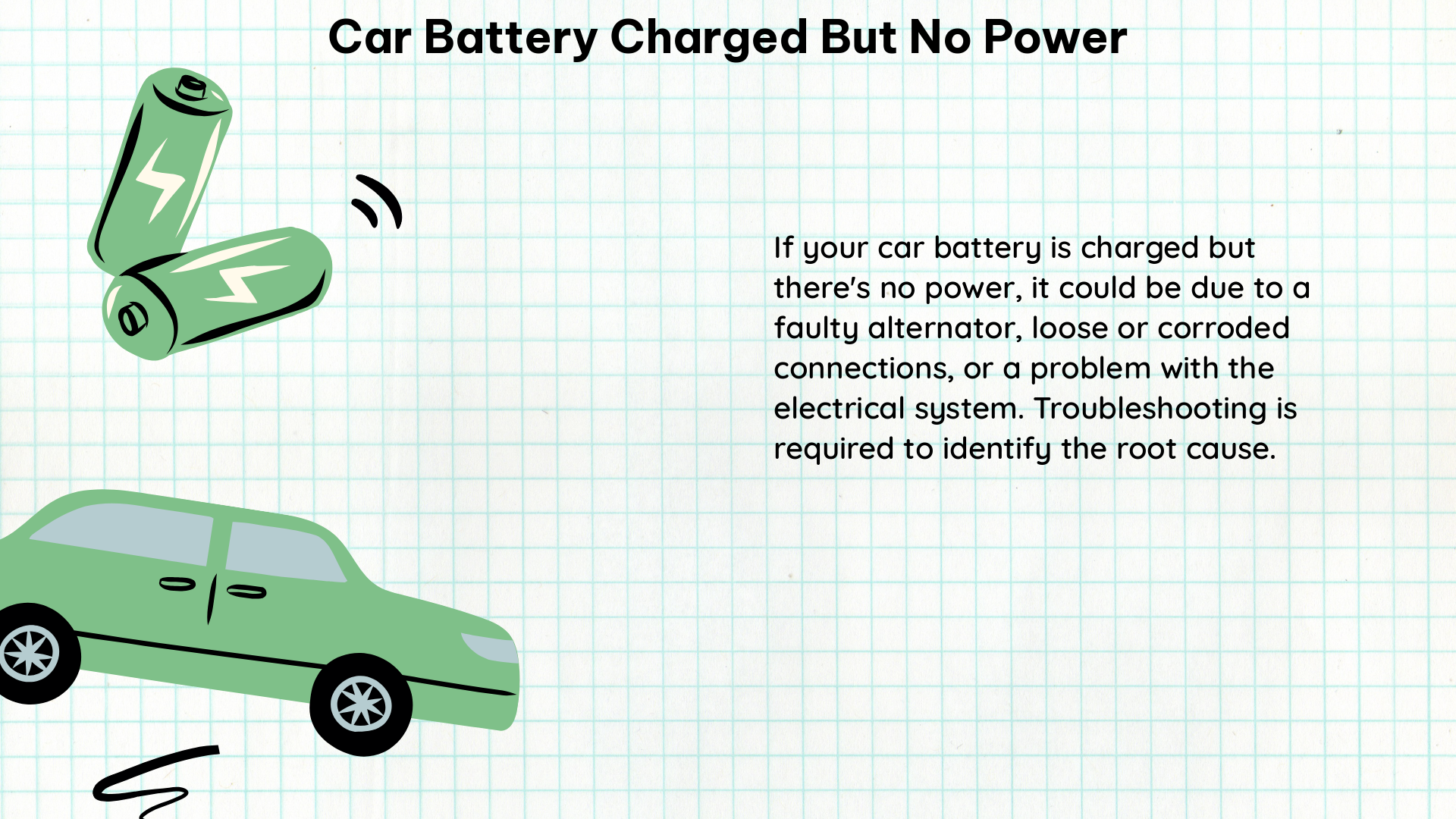A car battery that is fully charged but not providing power can be a frustrating issue for any vehicle owner. This problem can arise due to various reasons, including connection problems, corrosion, a faulty alternator, or a damaged battery itself. To diagnose and resolve this issue, a systematic approach involving quantifiable tests and measurements is crucial.
Checking the Battery’s Condition
The first step in troubleshooting a car battery that is charged but not providing power is to assess the battery’s condition. A fully charged 12V car battery should have a voltage reading of around 12.6V when the engine is off and above 10V when the engine is running.
To measure the battery’s voltage, you will need a digital multimeter. Simply connect the positive (red) lead to the positive terminal of the battery and the negative (black) lead to the negative terminal. The multimeter should display the battery’s voltage.
In addition to voltage, the battery’s cranking amperage is also an important factor. A healthy car battery should have a cranking amperage of around 700-1000 amps for a standard 12V battery. You can perform a load test to check the battery’s ability to supply ample current during engine start-up.
To conduct a load test, you will need a battery load tester. This device applies a heavy load to the battery, simulating the demand during engine cranking. The load tester will then display the battery’s cranking amperage. If the battery’s cranking amperage is significantly lower than the expected range, it may be an indication of a problem with the battery.
Inspecting the Electrical Connections

If the battery checks out, the next step is to inspect the electrical connections, including the battery terminals and the body ground. Corrosion or loose connections can cause a loss of power to the car, even with a fully charged battery.
To check the connections, you can use a multimeter to measure the resistance between the positive battery terminal and the corresponding connection point in the car’s electrical system. The resistance should be below 0.1 ohms for a good connection. If the resistance is higher, it may indicate a problem with the connection.
You can also visually inspect the battery terminals and connections for any signs of corrosion or damage. If you find any, you can clean the terminals using a wire brush or a battery terminal cleaner, and then apply a thin layer of dielectric grease to prevent future corrosion.
Evaluating the Alternator’s Performance
If the battery and connections are in good condition, the next step is to check the alternator. A faulty alternator can either overcharge or undercharge the battery, leading to a loss of power.
To test the alternator, you can use a multimeter to measure the voltage at the battery terminals while the engine is running. The voltage should be between 13.5V and 14.5V, indicating that the alternator is properly charging the battery.
If the voltage is outside of this range, it may be a sign of a problem with the alternator. The voltage regulator on the alternator or the sense wire can be the culprit if the alternator is the issue.
Diagnosing Computer or Sensor Issues
In some cases, the problem may be related to the car’s computer or sensors. As mentioned in the Chevy Silverado example, a diagnostic tool can be used to check for any error codes or issues with the car’s electrical system.
By connecting a diagnostic tool, you can access the car’s onboard computer and retrieve any stored trouble codes. These codes can provide valuable information about the specific problem, allowing you to target the root cause more effectively.
Conclusion
A car battery that is charged but not providing power can be a complex issue, with various potential causes. By following a systematic approach and performing quantifiable tests, such as voltage and current measurements, fuse checks, and load tests, you can diagnose the problem and take the necessary steps to resolve it.
Remember, it is important to rule out each potential issue before moving on to the next one. By methodically working through the troubleshooting process, you can identify and address the root cause of the problem, restoring your car’s electrical system to full functionality.
References:
– Justanswer.com – No power, car battery fully charged
– Mechanics.stackexchange.com – No power but battery, alternator, and connection are good
– Reddit.com/r/AskMechanics – This battery won’t start my car anymore, but the battery is fully charged
– Justanswer.com – Fully charged battery, no power
– Community.cartalk.com – 12V battery reads good voltage but no amps

The lambdageeks.com Core SME Team is a group of experienced subject matter experts from diverse scientific and technical fields including Physics, Chemistry, Technology,Electronics & Electrical Engineering, Automotive, Mechanical Engineering. Our team collaborates to create high-quality, well-researched articles on a wide range of science and technology topics for the lambdageeks.com website.
All Our Senior SME are having more than 7 Years of experience in the respective fields . They are either Working Industry Professionals or assocaited With different Universities. Refer Our Authors Page to get to know About our Core SMEs.